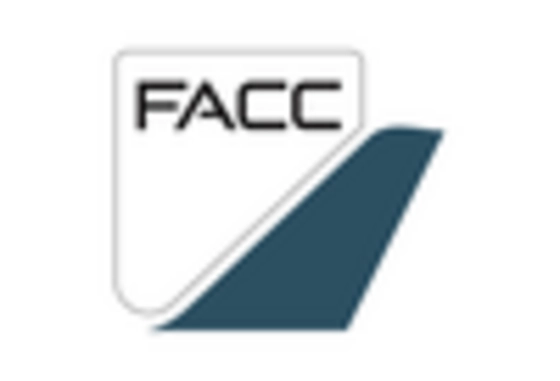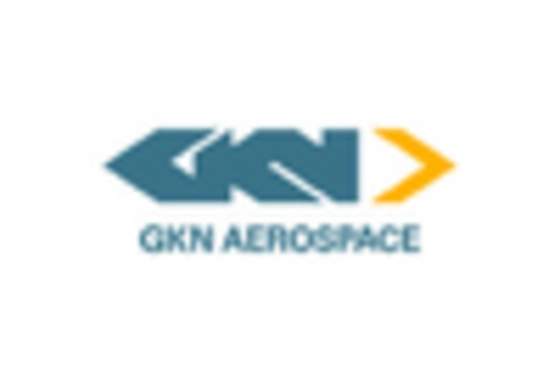The Commercial Aircraft Upholstery Market is currently characterized by a dynamic competitive landscape, driven by factors such as increasing passenger demand for comfort, regulatory requirements for safety, and a growing emphasis on sustainability. Major players like Boeing (US), Airbus (FR), and Zodiac Aerospace (FR) are at the forefront, each adopting distinct strategies to enhance their market positioning. Boeing (US) focuses on innovation in materials, particularly in lightweight and eco-friendly fabrics, which aligns with the industry's shift towards sustainability. Meanwhile, Airbus (FR) emphasizes partnerships with local suppliers to enhance its supply chain resilience, thereby ensuring timely delivery and quality control. Zodiac Aerospace (FR) is actively pursuing digital transformation initiatives, integrating advanced technologies into its manufacturing processes to improve efficiency and reduce costs. Collectively, these strategies contribute to a competitive environment that is increasingly focused on innovation and operational excellence.
In terms of business tactics, companies are localizing manufacturing to mitigate supply chain disruptions and optimize logistics. The market structure appears moderately fragmented, with several key players exerting influence while also allowing for niche competitors to thrive. This fragmentation is indicative of a landscape where collaboration and strategic partnerships are essential for maintaining competitive advantage. The collective influence of these key players shapes market dynamics, as they navigate challenges and opportunities in a rapidly evolving industry.
In August 2025, Boeing (US) announced a partnership with a leading textile manufacturer to develop a new line of sustainable upholstery materials. This strategic move is significant as it not only enhances Boeing's commitment to sustainability but also positions the company to meet the growing demand for eco-friendly solutions in the aviation sector. By leveraging innovative materials, Boeing aims to differentiate its offerings and appeal to environmentally conscious airlines.
In September 2025, Airbus (FR) launched a new initiative aimed at enhancing passenger experience through advanced upholstery designs that incorporate smart technology. This initiative reflects Airbus's strategic focus on integrating technology into its products, potentially transforming the in-flight experience. By prioritizing passenger comfort and connectivity, Airbus seeks to strengthen its competitive edge in the market.
In July 2025, Zodiac Aerospace (FR) unveiled a new manufacturing facility dedicated to the production of lightweight upholstery solutions. This facility is expected to enhance Zodiac's production capabilities and reduce lead times, thereby improving its responsiveness to market demands. The establishment of this facility underscores Zodiac's commitment to innovation and operational efficiency, which are critical in maintaining competitiveness in the upholstery market.
As of October 2025, current trends in the Commercial Aircraft Upholstery Market are increasingly defined by digitalization, sustainability, and the integration of artificial intelligence. Strategic alliances are becoming more prevalent, as companies recognize the need for collaboration to drive innovation and enhance supply chain reliability. Looking ahead, competitive differentiation is likely to evolve from traditional price-based competition to a focus on technological advancements and sustainable practices. This shift suggests that companies that prioritize innovation and adaptability will be better positioned to thrive in the future.


















Leave a Comment